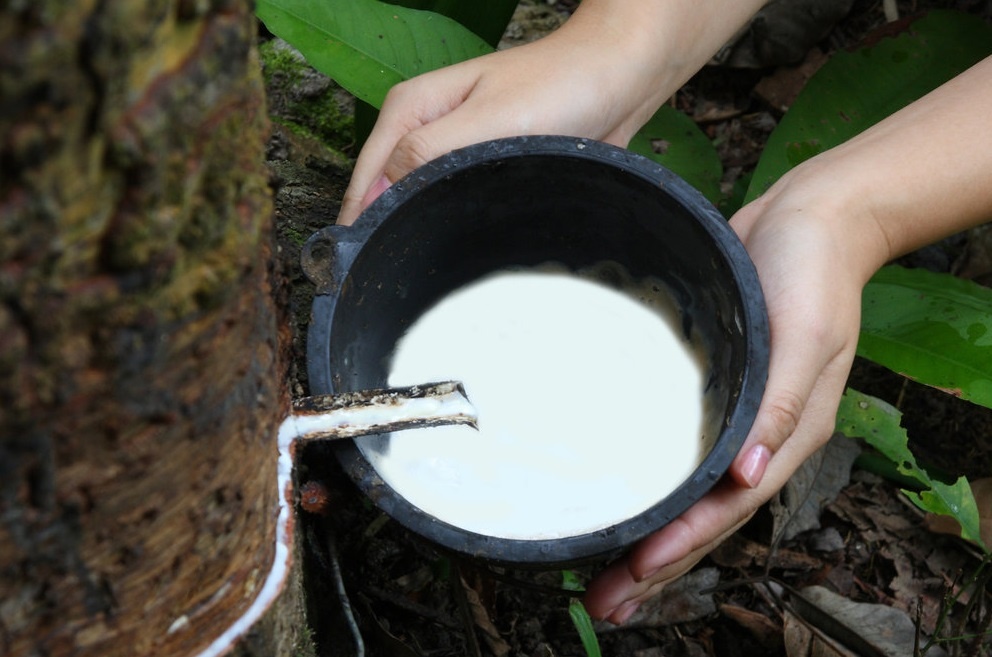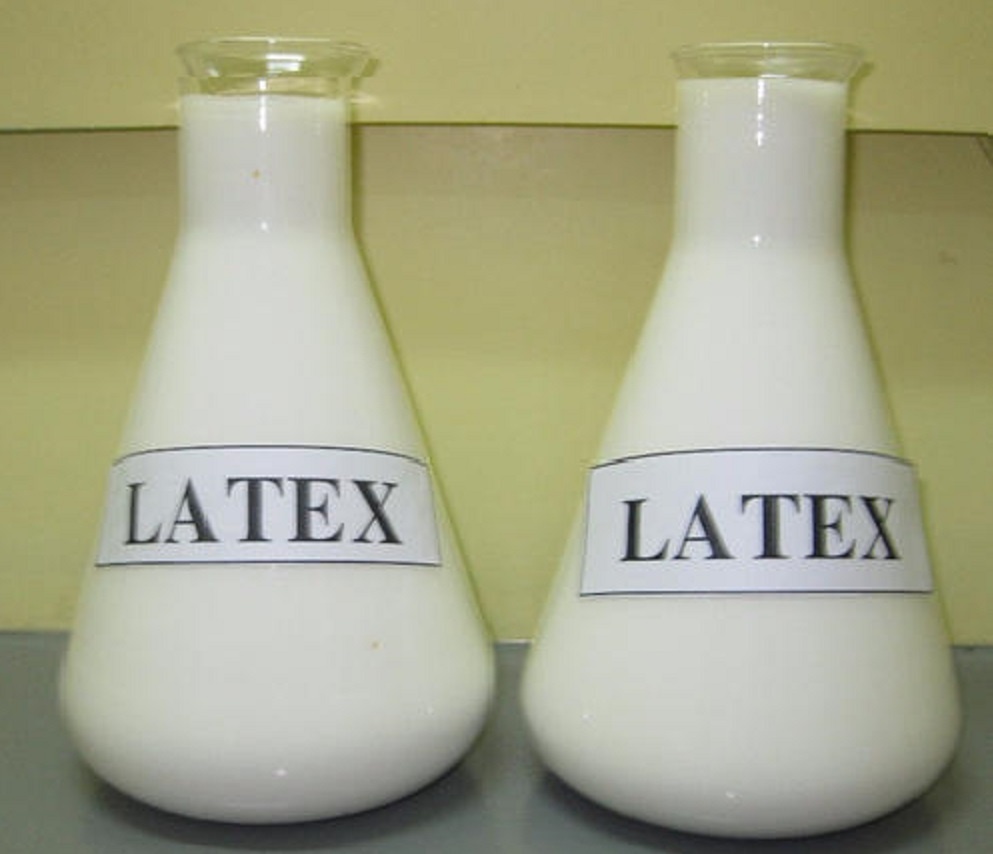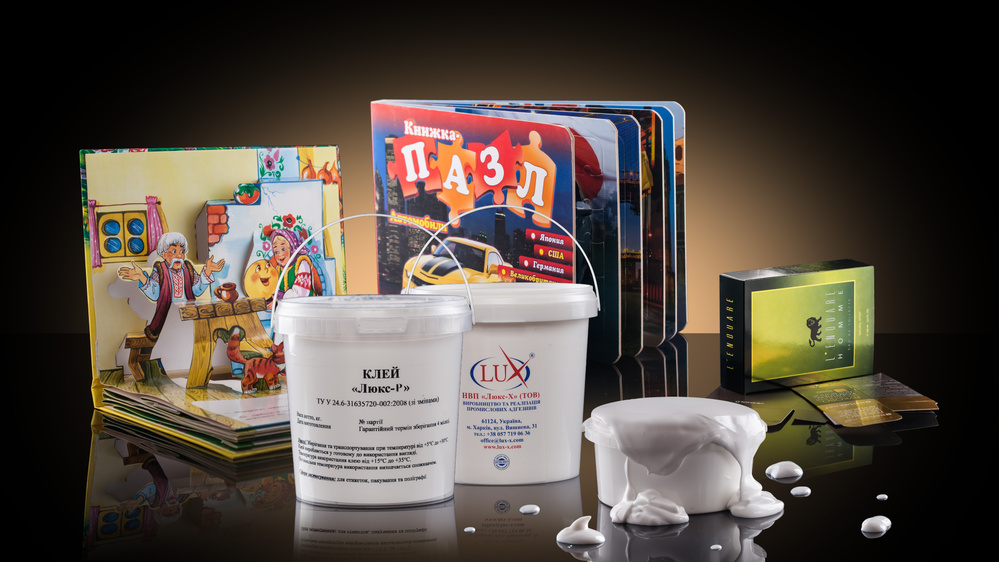Latex adhesive: features, composition and application
- What is a latex adhesive?
- Properties of latex adhesives
- Drawbacks of latex adhesives:
- Where are latex adhesives used?
- Advantages of Lux-R adhesives:
- Areas of application of Lux-R adhesives:
- Where to buy latex-based adhesives in Ukraine?
Latex is specially processed rubber that takes the form of an emulsion. Latex elasticity, hygienic qualities and the hydrophobic properties of the material enable using it in the production of a wide range of consumer and industrial products. Latex is produced by using natural and synthetic rubber. Natural rubber is obtained from the sap of the Brazilian hevea and some other plants. Such a method of obtaining the raw material is labour-consuming, therefore synthetic rubber is often used in industry. It is cost effective for enterprises and can be produced in any volumes, irrespective of climatic conditions.

What is a latex adhesive?
A latex adhesive is a sticky compound made of natural or synthetic latex by adding inorganic fillers as stabilising and modifying components. Adhesives made of natural latex are more sticky, elastic and durable.
Producers add resins, alcohols and ethers to the latex adhesive composition to improve the adhesion properties. Depending on the additional filling agents, latex adhesives can glue leather, wooden articles, paper, cardboard, floor covering and other materials.
Properties of latex adhesives
- The liquid consistency of the adhesive facilitates using a latex adhesive on porous surfaces. The adhesive fills in the pores and ensures reliable adhesion.
- The service life of a latex adhesive depends on the origin of the rubber. Adhesives based on natural latex can be used for three months. If the adhesive is based on synthetic rubber, the service life can be up to one year.
- Latex adhesives are used for finishing work due to the following properties: moisture resistance, resistance to microorganisms, and strong adhesion with cement.
- Adhesives are produced in ready-to-use form, and can be diluted with cold water if required.
- High solid content.
- The adhesive film is resistant to ageing.
Recommendations on storage, transportation and usage of latex adhesives
- Latex adhesives should be transported in special enamel-coated railway tank-cars at temperatures not lower than 5 °С.
- The adhesives should be stored in a dark and cool place in tightly closed containers, making sure to keep out moisture and solar radiation.
- Latex adhesive is applied as a thin layer onto a surface manually or by using mechanical means. The tools used for this can be a sprayer, roller or gluing equipment.
Depending on how the adhesive will be applied, the gluing technology will differ. A latex adhesive can be applied onto one or both sides of an article.
In the case of two-sided application, the adhesive is let to dry for 5 to 15 minutes with ventilation. If a latex adhesive is applied onto one side of an article, the glue film needs no drying.
The surfaces can be joined by hand, in a press or by using production equipment.
The process engineer adjusts the technology of bonding components depending on production conditions.

Drawbacks of latex adhesives:
- The glue joint of a latex adhesive is characterised by poor frost tolerance. At temperatures below 5 °С, the adhesive structure deteriorates.
- It is not recommended to use a latex adhesive for working with metals because the polymer releases chloride under the effect of the metal, and this worsens the adhesive’s adhesion properties and causes corrosion.
Where are latex adhesives used?
Owing to high adhesion properties, a latex adhesive is capable of gluing different materials and is used in the following industries:
- In furniture making and the woodworking industries.
- In making footwear and leather articles. A synthetic latex adhesive can bind together leather and textile articles. After a latex adhesive has been applied onto a surface, the articles need no special drying. The sticky sides of surfaces are joined with each other and let to stay for 5-10 minutes. The high gluing strength of the joints helps to reliably glue the edges of leather elements onto a casing base: paper, cardboard, plywood.
- Gluing linoleum, carpet flooring, and polymer tiles. The mixture for gluing flooring is not waterproof, therefore it is recommended to clean flooring without using water.
- Construction work: latex adhesive is added to cement mixes to make it elastic.
- Textile industry – latex adhesive is used for tanning fabrics to make them more compact and wear-resistant.
- In packaging and printing – latex adhesive glues paper and porous materials very steadfast.
- When making laminated materials – the adhesive glues metal foil to paper or wood.
- Making duct tape.
Pressure-sensitive adhesives are made based on a mixture of natural and synthetic latexes. Stabilising components are added to the solution obtained. Stabilisers can be casein, and potassium or ammonia oleates. The pressure-sensitive adhesive is applied onto one of the surfaces to be joined, it is let to dry, and then both surfaces are pressed together.
Lux-Х LLC offers water-soluble adhesives of the Lux-R product line, with a composition including natural and synthetic latexes. The range of Lux-R adhesives is broad. The adhesives are used to glue different materials. The adhesives are made of safe components and their prices are affordable.

Advantages of Lux-R adhesives:
- Non-toxic and non-combustible, and the glue joint is resistant to environmental effects.
- Do not oxidise and damage rubber and metal parts of equipment during production.
- Ease of usage: can be applied by both mechanical means with roller or disc machines, and manually.
Areas of application of Lux-R adhesives:
- Labelling paper and carton containers.
- Making carton and spirally-wound carton packages and packages with an intricate polymer coating, and laminated finishing and construction materials.
- Printing: gluing book blocks into the jacket, backing, making book jackets, and for making intricate polymer coatings.
- Cold lamination of cardboard with paper and polymer films, including the applying of UV varnish.
- Light industry – for making multilayer coatings and scotch tape (duct tape).
Where to buy latex-based adhesives in Ukraine?
For different application areas, we recommend using the Lux-Р adhesive. It is safe for your health and the environment. Before using a latex adhesive with other kinds of adhesives, test it for compatibility. The adhesive is sold wholesale by the producer. When ordering more than 30 kg of an adhesive, delivery is free-of-charge. You can receive a detailed description and consultations on an adhesive price by telephone +38 (057) 766 06 36 or by using the contact form on the company’s website.






